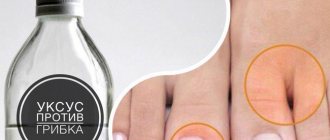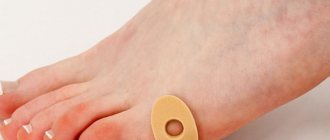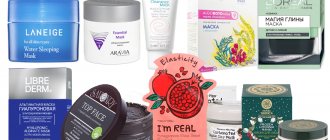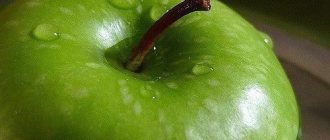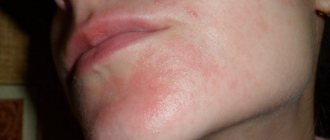The problem of foot fungus is familiar to many first-hand. The disease itself is very unpleasant, and treatment is long and expensive. Are there drugs that destroy the infection? It turns out there are a lot of them. Many people do not take disinfection of shoes seriously, but in vain - this procedure will allow you to forget about the fungus forever, and not spend money on expensive medications.
Why do you need to treat shoes?
It is necessary to disinfect shoes in order to avoid relapse. Fungal mycelia remain viable for a long time, which means the risk of re-infection is very high. Even if the disease is completely destroyed on the legs, the spores are likely to remain on the surface of the material.
You can treat shoes for nail fungus with both medications and home remedies. Pay special attention to second-hand items; they need to be disinfected in any case. The presence of a persistent unpleasant odor on your shoes is an alarming sign; for preventive purposes, it is better to treat all shoes.
In what cases should shoes be disinfected?
Nail fungus is a serious infection that tends to become latent. It requires a systematic approach, long-term complex treatment. The shoes of a person suffering from mycosis or who have had it can again cause a relapse of the infection, since the causative agents of the disease remain viable for 12 months. To prevent re-infection, it must be disinfected.
Treating shoes with nail fungus should be done every day and with special care. To do this, you can use medications and folk remedies, specific devices and devices with a fungicidal effect.
Both shoes and hosiery should be disinfected.
Folk remedies
The necessary components for disinfection will be found in your household. Let's look at the methods in more detail.
Vinegar essence
Vinegar will help remove fungus from shoes. It is recommended to take 40% essence, it is especially effective for treating boots. The odorous liquid destroys spores and bacteria, eliminates infection:
- Soak a cotton pad in vinegar essence.
- Remove the insoles. Process them.
- Wipe the inside of your shoes. Don't forget about hard-to-reach places - seams, joints, laces.
- Place clean cotton wool in the toe and put the shoes in a plastic bag.
- After 2-3 days, take out your shoes. Place the pair on the windowsill for ventilation.
After disinfection, the shoes can be safely worn. But keep in mind that vinegar can “eat away” the color and damage some types of coatings. Apply acid only from the inside so as not to damage the shoes.
Ammonia + peroxide + alcohol
A mixture of ammonia, peroxide and alcohol will help treat the inner surface of shoes if the nails are affected by fungus. Disinfecting liquids disinfect carefully and effectively.
The method is simple: mix 1 tbsp. l. components and apply the product using a cotton pad to the shoes. Dry in fresh air. Repeat the procedure every day until all signs of illness disappear and the unpleasant odor disappears. Regular treatment will disinfect shoes, but it will not be possible to destroy all the fungus at once.
Ammonia, peroxide and alcohol can be used separately. The principle is the same - soak cotton wool in the liquid and treat the inside surface of the boots.
Potassium permanganate
Another way to disinfect things is to use potassium permanganate.
Place the dark red crystals in a container of water. The color of the solution should be brown. Then you need to take a cotton pad, treat the shoes and wait until dry.
Please note that potassium permanganate can turn light-colored material pink.
Soda + activated carbon
Disinfection with regular baking soda is one of the most effective methods for disinfecting at home. If you add charcoal to the white powder, the efficiency will increase:
- Sprinkle baking soda liberally inside the shoes.
- Add crushed charcoal tablets.
- Shake the pair well and leave in a warm, dry place for several hours.
The advantages of the method include the absence of a pungent odor and aggressive reagents. This product can be used to treat different types of shoes, since the components do not stain or leave marks. For a light pair, you can replace black coal with white.
Safety precautions during processing
When disinfecting shoes, the following rules must be observed:
- Protect your respiratory tract and skin with a respiratory mask and gloves.
- After finishing treatment, wash your face and hands with soap.
- If the components of the disinfectant come into contact with the skin, they should be washed with plenty of soap and water. If the drug gets on the mucous membranes, they are also washed, but without the use of detergents, with additional sodium sulfacyl instilled.
- If the disinfectant gets into the stomach, it is necessary to rinse it and undergo symptomatic therapy. In case of poisoning, seek emergency help.
If you follow all the recommendations for disinfecting shoes, you can not only achieve what you want - kill the causative agents of onychomycosis, but also eliminate extraneous unpleasant odors from sweat, animals, etc. Upon completion of such treatment, it will no longer be a source of infection.
Pharmacy disinfectant solutions
If you do not want to use traditional methods, purchase disinfectants at the pharmacy. The assortment is quite wide.
Chlorhexidine or Miramistin
You can disinfect shoes from nail fungus with Chlorhexidine solution. The economical product is sold at any pharmacy. It is odorless, does not stain shoes, and does not leave stains on the surface. For disinfection, use a 1% solution.
Similar Miramistin is more expensive, but fights viruses and microorganisms more effectively. In addition, the drug is considered safe for the skin and mucous membranes. Children, pregnant women and people with allergies can treat their shoes themselves without fear of side effects.
Both methods can be used. It is useful to regularly wipe things with a solution for prevention.
Formalin
Pharmacies sell a drug called Formidron. The antifungal agent completely destroys pathogenic microflora; one or two applications are enough. This substance is toxic, so do not forget about safety rules when working. Wear gloves and keep children and pets away.
Wet a cotton swab and apply it to your boots or shoes. Place the pair in a tight bag and leave for a day.
Formidron or 15% formaldehyde solution is suitable for use on any shoe.
Which way is better?
It is not easy to give recommendations on a particular method of disinfecting shoes. Each has its own advantages and disadvantages.
The most harmless to human health and shoes are special devices against fungal infections. However, they should be used strictly according to the instructions, not forgetting about fire safety measures, since most of them operate from the electrical network.
Pharmacological disinfectants take second place in terms of effectiveness and safety. Some of the best include Chlorhexidine, Miramistin and Dezavid. They are easy to use in practice and, when used correctly, give decent results. But some are still dangerous to human health, for example, Formalin.
Folk remedies also have antifungal effectiveness, but less in comparison with pharmacy analogues and devices. They are safe for health, but often spoil shoes, leave behind characteristic odors and require repeated use due to the short duration of the fungicidal effect.
Special preparations
You can disinfect shoes using special antifungal drugs, which are sold in large quantities in pharmacies.
Mycostop, Gorosten or Dezavid are available in the form of sprays. This is very convenient - just spray the liquid inside the shoe. The treated pair can be put on immediately and is completely safe for your feet. The substances create a thin protective film that prevents the growth of bacteria. The preparations are harmless to humans and hypoallergenic, which makes them suitable for treating children's things.
Bicine is used quite actively. The substance fights bacteria, viruses and fungi and is available in different forms. Follow the instructions and take precautions.
To prevent fungus, you can use wet disinfectant wipes. They are impregnated with an antibacterial solution, which does not allow microorganisms to multiply. The composition does not contain aggressive substances. The wipes are suitable for gentle foot care. Treat your feet in the sauna, solarium, swimming pool. Then infections will bypass you.
Most drugs fall into the budget category. Processing does not require your time and effort.
FAQ
How to disinfect as quickly as possible?
Disinfecting wipes, for example, Trilox, will help disinfect shoes for preventive purposes in a short time, literally in a minute. But this method is recommended for use in extreme conditions, in particular when visiting a sauna or bathhouse, where it is not possible to use other disinfection methods.
At home, it is better to use special disinfection devices that are more effective. Within a few minutes or hours, depending on the chosen device, they help get rid of all pathogens without wasting additional time on drying and airing shoes, and, therefore, harming them.
How do you know that disinfection has been carried out sufficiently?
No one will be able to understand this immediately after the processing procedure. The disappearance of an unpleasant odor does not mean that the disinfectant has fully helped. Therefore, it is recommended to repeat the treatment periodically for preventive purposes - at least once a week when it comes to treating a mycotic infection of the feet, and more often when using folk recipes.
The absence of relapse of pathology is a sure sign of the effectiveness of the chosen method.
How not to ruin your shoes?
To ensure the safety of the product used, it is necessary to test it in advance on a small area of leather or fabric of shoes or boots. As a rule, special disinfection devices and pharmacological preparations do not have a negative effect on this item of clothing. Of course, there are exceptions, so it’s better to play it safe and check the reaction of the shoe finishing to the selected antiseptic.
How long after treatment can I wear shoes?
The answer to this question depends on the type of drug or disinfectant chosen. For example, hardware ultraviolet treatment allows you to wear shoes immediately after the disinfection procedure is completed, that is, after 6–10 hours.
If you use pharmacological sprays and solutions, it takes time for shoes and boots to dry and the smell to disappear. It is believed that these measures are enough for pathogenic microflora to completely disappear from the inner surface of the shoe.
How often should treatment be carried out?
Treating shoes against fungus should be carried out several times. We list these stages in a small table.
| Subsequence | Description |
| When the first signs of onychomycosis are detected | Immediately after identifying the infectious process before starting therapy. |
| During treatment of the disease | Once a week or a month, depending on the drug chosen. |
| After confirmed recovery | After finishing taking medications for prophylactic purposes. |
If you neglect to disinfect shoes at any of these stages, the likelihood of a recurrence of infection increases to 100%.
Is it possible to get fungus through shoes?
Of course, there is a risk and it cannot be called low. It is not necessary to visit swimming pools or saunas to catch a mycotic infection. Infection occurs through shoes in the following cases:
- Wearing used shoes or boots. This often happens when purchasing wardrobe items second hand or wearing them for family members. This also includes trying on in a store.
- Having to walk in the same shoes for long periods of time, especially during the winter months. This fact becomes an impetus for the development of fungal infection in conditions of high humidity, heat and lack of adequate air access.
Hardware disinfection
One of the modern and effective methods is the Xenelight device. Let's take a closer look at its action.
Xenelight is a boot dryer with an ultraviolet lamp. The device will help get rid of pathogenic micelles and bacteria. Ultraviolet light instantly destroys microorganisms. Your shoes will be cleaned, disinfected and thoroughly dried in just a few minutes. It will be useful to purchase the device if foot fungus often torments you. A UV lamp is always useful in the house where a child lives - processing personal belongings will help avoid many troubles.
In order to disinfect shoes from fungus, they use a device called Timson. It consists of shoe inserts that are connected to the electrical network. After 5-10 hours of treatment, the fungal pathogens will be destroyed. The device is sold in pharmacy chains and online stores.
If the procedure is carried out in a timely manner, long-term treatment and re-infection can be avoided.
How to disinfect shoes using the Xenelight device
Another option is to use ultraviolet rays. The Xenelight shoe dryer has a depressing effect on the fungus and kills it in a few minutes. It contains a desiccant and gas-discharge bactericidal lamps. Battery operated. The shoes do not dry out, they turn off automatically, no power socket is required. If you accidentally step on the device, you cannot get hurt - the lamps are protected by powerful, shatter-proof plastic. Suitable for all types of shoes made of any material.
Price - 2300 rubles.
Popular methods of disinfecting shoes
There are many ways to combat mycosis. The choice of disinfectants is very large. They use chemical solutions, special antifungal agents, traditional methods, devices and napkins.
Vinegar essence (including apple cider vinegar).
Vinegar essence is widely used to treat mycosis and treat shoes. Acetic acid creates an acidic environment in which fungal spores stop reproducing and die. However, this method should not be used during pregnancy, reduced immunity, or when large areas are affected.
In addition to vinegar essence, wine and apple cider vinegar are used. A cotton swab is soaked in vinegar and applied to the affected area.
Treatment with vinegar essence is done as follows: a cotton ball is moistened in vinegar and placed inside. The shoes are placed in a bag and left for a day. Then ventilate thoroughly. This type of disinfection can damage the material, so before processing the material being treated should be tested on a small area for resistance to acetic acid.
Chlorhexidine.
Chemical agent. Please note that a 1% solution is suitable for processing. The advantage of this product is the absence of a strong odor. The treatment is carried out as follows: a cotton ball is moistened in the product, placed inside the shoe and the bag is tightly tied. Leave overnight, then ventilate. Suitable for prevention. For treatment it is better to use more effective means.
Hydrogen peroxide.
Use 3% hydrogen peroxide. To achieve the effect, shoes are treated for several months. Used in combination with other drugs. For example, once with chlorhexidine, next time with hydrogen peroxide.
Formidron.
Has a strong antifungal effect. Processing is carried out from the inside. We treat the insoles separately and place them in a bag for a day, then take them out and dry them. Important: highly toxic drug. Before use, consult a doctor.
Formalin solution 15%.
Despite the unpleasant odor, it copes well with bactericidal problems. It is highly toxic. When disinfecting, be sure to use gloves and a mask. Shoe processing and drying is carried out outdoors. Due to their high toxicity, with frequent use, formalin and formidron can negatively affect the respiratory and nervous systems.
Miramistin.
Has no color or smell. Safe to use. Used in the same way as chlorhexidine.
How long does fungus live in shoes if you don't wear them?
Dermatophytes are very tenacious. In the environment they can live up to two years, and their spores can live up to ten years. They are not afraid of sunlight, prolonged darkness, or sub-zero temperatures. Only with prolonged exposure to temperatures above 60 degrees do they die. At 100 degrees this process occurs faster.
Therefore, if a pair of favorite shoes has stood untouched even for 2 years, there is no guarantee that the fungus and its spores are no longer there. Each pair sent for long-term storage must be processed.
Every person has available means to disinfect their pair of shoes. If this cannot be done for some reason, it is better to think about a new acquisition.
Why do you need shoe treatment for toenail fungus?
First of all, things are disinfected for preventive purposes immediately after purchase. After all, no one knows if anyone else has tried them on and how their fungus is going.
Dermatophyte spores can remain on the inside of shoes, causing constant self-infection. Then treatment becomes pointless. Therefore, in order to avoid relapse, in parallel with therapeutic measures against the fungus, household slippers are disinfected.
Winter boots and boots, which are worn almost every day during the season, are treated to free them from unpleasant odors and fungus. In this way, two goals are achieved at once.
Disinfection for preventive purposes
Simultaneously with the use of disinfectants to clean shoes from the presence of possible pathogens of onychomycosis listed above, after recovery, it is recommended to use the following tips:
- regularly dry and air shoes and insoles;
- expose the inner surface of the shoe to sunlight;
- periodically treat it with chemicals with a fungicidal effect using a wet method.
Sequence of actions for onychomycosis and contaminated shoes
Treatment of this disease is based not only on the use of external and systemic drugs with an antifungal effect. A component of therapy is the disinfection of shoes, since without it one cannot count on the success of the practiced measures.
By properly treating shoes, the likelihood of infection recurrence is minimized. For this purpose, products are used that effectively fight nail and foot fungus.
Before disinfection, shoes are thoroughly washed to remove visible dirt, dried and protective gloves are put on hands. The inside of shoes or boots is wiped with a swab dipped in a disinfectant, treated with a spray, or a special device with ultraviolet radiation is inserted - the disinfection technique will look individually depending on the chosen method.
The insoles are removed and additionally wiped with an antiseptic on both sides. After this, if there are no other recommendations in the instructions, the shoes are thoroughly dried and ventilated, and they become ready for further wear.
Fungus prevention and sock treatment
Compliance with the rules of personal hygiene makes it possible to avoid the development of mycotic infections on the skin of the feet and the surface of the nails. We list its main recommendations:
- Wash your feet in the morning and evening and dry the skin thoroughly. Particular attention is paid to the spaces between the fingers.
- Shoes should be worn from natural materials, comfortable in shape and size. It is strictly not recommended to wear someone else's shoes and boots.
- You cannot walk barefoot in public places.
- Hosiery should be changed daily.
Socks can spread onychomycosis pathogens if not properly cared for. They should be washed exclusively in hot water using washing powder. Then rinse thoroughly and dry in fresh air.
During the treatment of a mycotic infection of the skin of the feet and nails, and after recovery, it is recommended to treat socks with Chlorhexidine. This will allow you to get rid of pathogenic microorganisms in full. You can replace the drug with folk remedies, for example, boil the socks and hosiery in water with the addition of soda and laundry soap for 2 minutes, which is no less effective.
Of course, disinfection should be carried out regularly until the patient has fully recovered and for another month after that in order to avoid relapse of the disease. Which method to choose is an individual question, the answer to which depends on the person’s financial capabilities and employment.
Ultraviolet dryers
You should pay attention to special ultraviolet dryers (fungus lamp for shoes). Under the influence of ultraviolet radiation, fungus and other harmful organisms are destroyed. Timson and Xenelight lamps are often used. Very easy to use. Just insert into each sock and turn on. Wait 6-8 hours. They dry shoes well and remove unpleasant odors. When choosing, it is important not to buy a fake. It’s easy enough to check by holding any banknote up to the glow. Absolutely safe. An excellent solution for allergy sufferers and people with hypersensitivity to drugs
Let's sum it up
Each person can independently choose the method and preparation for treating shoes against fungus. Many people choose protection in the form of cotton socks, while neglecting disinfection. However, in this case, it is better to play it safe and have your shoes treated for fungus in a timely manner.
It is quite difficult to independently choose how to treat shoes against fungus at home and which antifungal agent to use. In this case, you can seek advice from your doctor. The specialist will tell you about the benefits of antifungal agents and indicate the need for this procedure.
It is important to understand that treating socks will not give the desired result. It's better to throw away all your old socks and buy new ones. Antifungal agents will destroy spores of pathogenic bacteria and make shoes fresh. You no longer have to worry about unpleasant foot odor.
Tell everyone:
